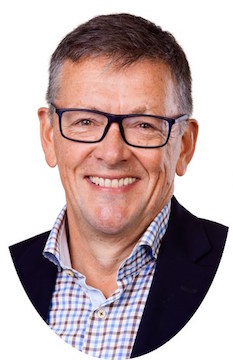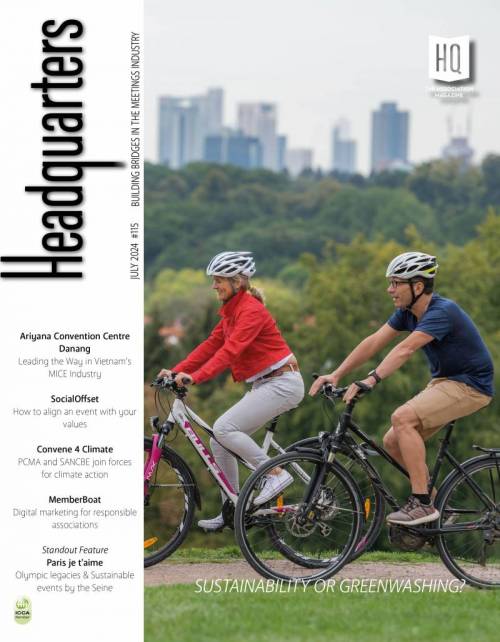Membership Engagement - Facilitating the Process

Jeffer London speaks with Trevor Durnford about the secrets of membership engagement. Trevor chairs the board of the International Association of Facilitation (IAF), who just won the “Best Membership Engagement” prize from the Association of Association Executives. With 30 years of experience in implementing major change projects, Trevor now shares his passion for developing people and organisations with an association full of change-makers. The IAF is a worldwide community of facilitators promoting excellence in the use of professional group process facilitation to create engagement and impact. Jeffer London is a facilitator at the Center for Creative Leadership. CCL® is a top-ranked global provider of executive education that develops better leaders through its exclusive focus on leadership education and research.

With nearly 2000 facilitators as members, you might say, “no wonder they’re engaged” – yet every human system needs some juice to keep it moving. The IAF has discovered the secret sauce to build engagement and they are very willing to share. With members the world over, with diverse languages, practices and needs, this association has united their members through shared causes and human needs that serve members and any group who needs to work better together. If you are looking for facilitations skills have a look at the International Association of Facilitators.
Jeffer London: How did engagement become a top priority for the IAF?
Trevor Durnford: As a professional body for facilitators, we are deep into inclusion but that doesn’t mean building engagement happens on it’s own. While our members all have the facilitative skills to build engaged groups, our association-wide engagement did not start to shift until we wove it into that vision and leadership. The conversation started four years ago, at our face-to-face board meeting, and started to take hold the following year, when we organised ourselves around nine key focus areas – two of which were all about driving engagement. Once engagement was woven into our focus, we started the journey. We shaped Basecamp, our virtual collaboration tool, around these focus areas so that our conversation could remain targeted on our vision for member engagement.
JL: So, engagement is part of your leadership strategy?
TD: Yes, but it is not a separate project or initiative. Engagement is the way we do things here. It’s in our value proposition; it is integral to explicit focus areas that we track. We look at the visible signs of engagement – retention, conference participation, member’s outcomes, impact awards – and we celebrate when we have the success.
JL: What was your vision for an engaged association?
TD: We asked ourselves “what would a 10 out of 10 look like”, for these elements of our strategy. Our future perfect included having our resources and support in a range of languages, frequent membership surveys, a valuable e-zine. We also felt that engagement wasn’t just between the association and its members but also that we would see connectivity across the globe amongst members and with their other communities. From this foundation, new ideas popped up – Special Interest Groups being the most compelling – when members connected with each other around shared causes. That’s when engagement took off. People love to rally around a cause, we are just the platform to help members to connect. The action is in the interaction!
JL: How do you deal with your free-minded members and the ideas they bring?
TD: I see the change landscape as being on a continuum from control to chaos, with the 'sweet spot' of self-organising, emergent change somewhere in between. This is absolutely applicable to our association. Take the example of a recent enquiry about allowing chapters to approach local sponsors to prop up their finances. A board that was tending too much towards control, would: write a policy; want to see who and what organisations were becoming sponsors; probably administer it centrally. A board tending too much to chaos, would simply say 'OK' off you go. However, by establishing a few broad principles and tips, our chapters have freedom to act, whilst establishing a pattern that can be used elsewhere. Does this create certainty… no. Does this mean we will all be in agreement… probably not. But that's the nature of self-organising change which by the way, is where natural systems thrive.
JL: Can you give us examples of initiatives that have enhanced engagement?
TD: Some are formal, others home-grown. On the formal side, we have conferences, certifications and awards. Half of our membership join regional conferences, which attract new recruits thanks to member discounts. Many of our members follow our certification process, which is a deep reflection on their practice. Finally, we offer the “Facilitation Impact Awards” through a peer review that celebrates the talent of our members, as well as the faith clients put in them. On the informal side, we have IAF meet-ups. These local events allow us to interact in a meaningful way with a population ten times more than our membership. We also host “International Facilitation Week” (#facweek) which had more than 200 local activities this year – again, involving wide groups of non-members that dwarf our actual membership.
Between all the events, we have the digital collaboration forum, where special interest groups gather by language, topic, and affinity. From defining our ethics to engagement, from developing content to being brand ambassadors, forums are the place we find our collective intelligence have given birth to our best ideas.
JL: Is social media part of your strategy?
TD: We are on the major social channels with @IAFacilitators of the “International Association of Facilitation” and this is increasing becoming our communication channel. We still send a monthly email and do our e-zine, but thousands more connect with us via Facebook, Twitter, LinkedIn and Instagram. We know we reach the world of facilitators; reaching all the groups who need better group process facilitation. That is our nut to crack!
JL: Do you measure engagement?
TD: We don’t target membership growth, rather we aim to be valuable to members. We follow what John Kay calls the ‘law of Obliquity’. We get closer to our ultimate goal by pursuing intermediate objectives, and working towards a higher goal that has the side-effect of delivering what we need. The fact that our membership rises more than 5% year-on-year is good, but seeing how this is outpaced by our reach and outputs is what makes us proud.
JL: What would your message be to other association CEO's or Board Chairs?
TD: Begin with the end in mind, determine your “future perfect” as an executive team and make sure the conversation can be sustained using virtual tools in between board meetings. Remember, the action is in the interaction. Make it easy for people to connect virtually and do this without control from the centre. Start small, and learn from your initiatives. Help your leaders focus on what’s working well, so that they can do more of it, rather than wasting time on fixing what’s wrong.
For insights into the facilitation of engagement, see Jeffer’s blog about stimulating conversation at jeffer-london.com.
Other Articles
About Us
Supported by the Union of International Associations (UIA), the International Association of Professional Congress Organisers (IAPCO) and the Interel Group, the global public affairs and association management consultancy, Headquarters Magazines serve the needs of international associations organising worldwide congresses.















